Monday, 17 April 2023
Functional asymmetry in the brain
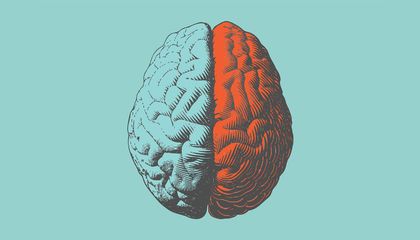
.
Today I’d like to draw your attention to the fact that even though there are two of every structure in the brain – one in the left hemisphere and the other in the right – in many cases, starting with the cortex, the paired structures in the two hemispheres do not have exactly the same functions. (more…)
From Thought to Language | Comments Closed
Tuesday, 28 March 2023
The interactions between DNA and proteins
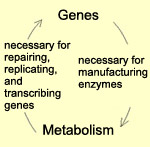
This week, I’d like to say a few words about an important change from the way that the interactions between DNA and proteins were long thought of.
We have now come a long way from the simplistic linear understanding that we had from the start of genetics, in which the “genetic program” of DNA was copied into messenger RNA which then exited the cell nucleus and was translated into proteins in the cytoplasm. As we have just seen, the reality is more of a complex metabolic network subject to a circular logic that assumes no “program” and hence no absolute starting point. In other words, we must now discard this “genocentric” heritage according to which DNA is the foundation of everything, because it provides the building plans. (more…)
From the Simple to the Complex | Comments Closed
Tuesday, 7 March 2023
What if the solution was in subtraction?
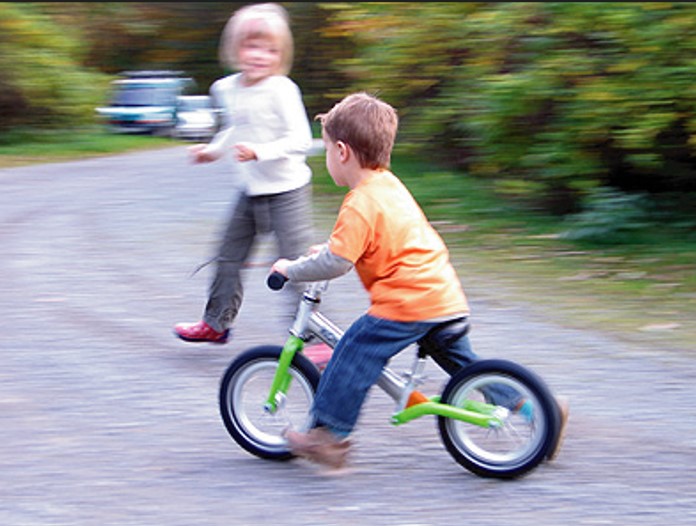
Maybe, like I did, you learned to ride a bicycle with training wheels. You started with both of them firmly on the road, keeping you steady. Then, as you gained confidence (which may have taken a while), whoever was teaching you to ride raised them gradually and eventually removed them completely. (more…)
Body Movement and the Brain, From Thought to Language | Comments Closed
Tuesday, 14 February 2023
Brain in pieces versus brain-body-environment resulting from a long evolutionary process
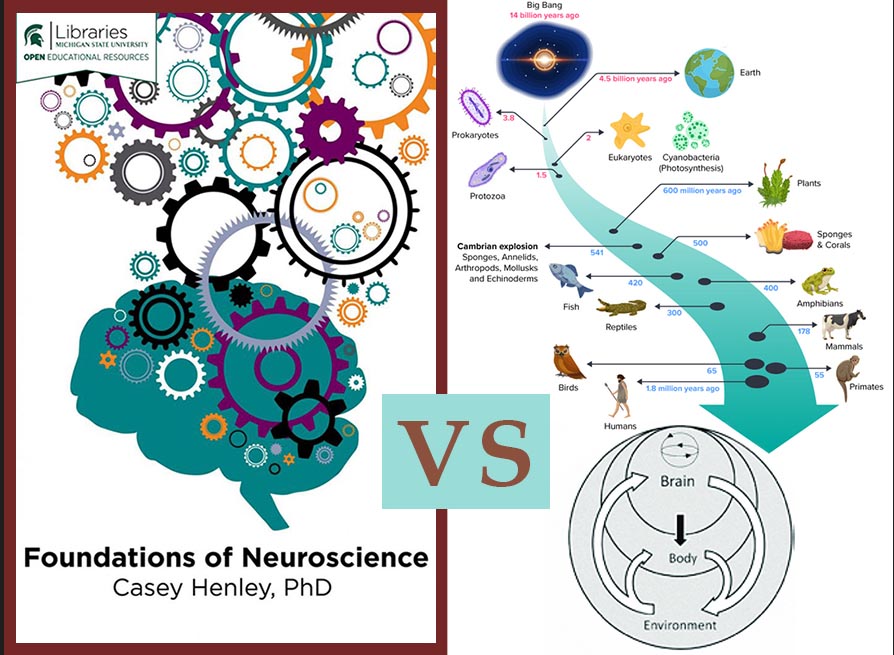
.
In 2021, Dr. Casey Henley, an assistant professor in the Department of Physiology at Michigan State University, published a free online book entitled Foundations of Neuroscience, intended for university undergraduate students. She deserves much credit for this initiative to make basic knowledge about neuroscience and the human brain available to this audience, as well as for the clarity of this book’s content and illustrations, which is exceptional for an introductory textbook in this field. This clarity carries over into the book’s overall structure, which follows a traditional model. It starts with chapters on the anatomy of the neuron, the ionic mechanisms of action potentials and the basics of synaptic integration. Next come chapters on the more general organization of the nervous system, including the various “sensory systems” and then the “motor system.” Lastly, there are chapters on “behaviour”, including phenomena such as motivation and reward, fear, stress and the behaviours associated with sexual differentiation. (more…)
From the Simple to the Complex | Comments Closed
Monday, 2 January 2023
Theories of consciousness
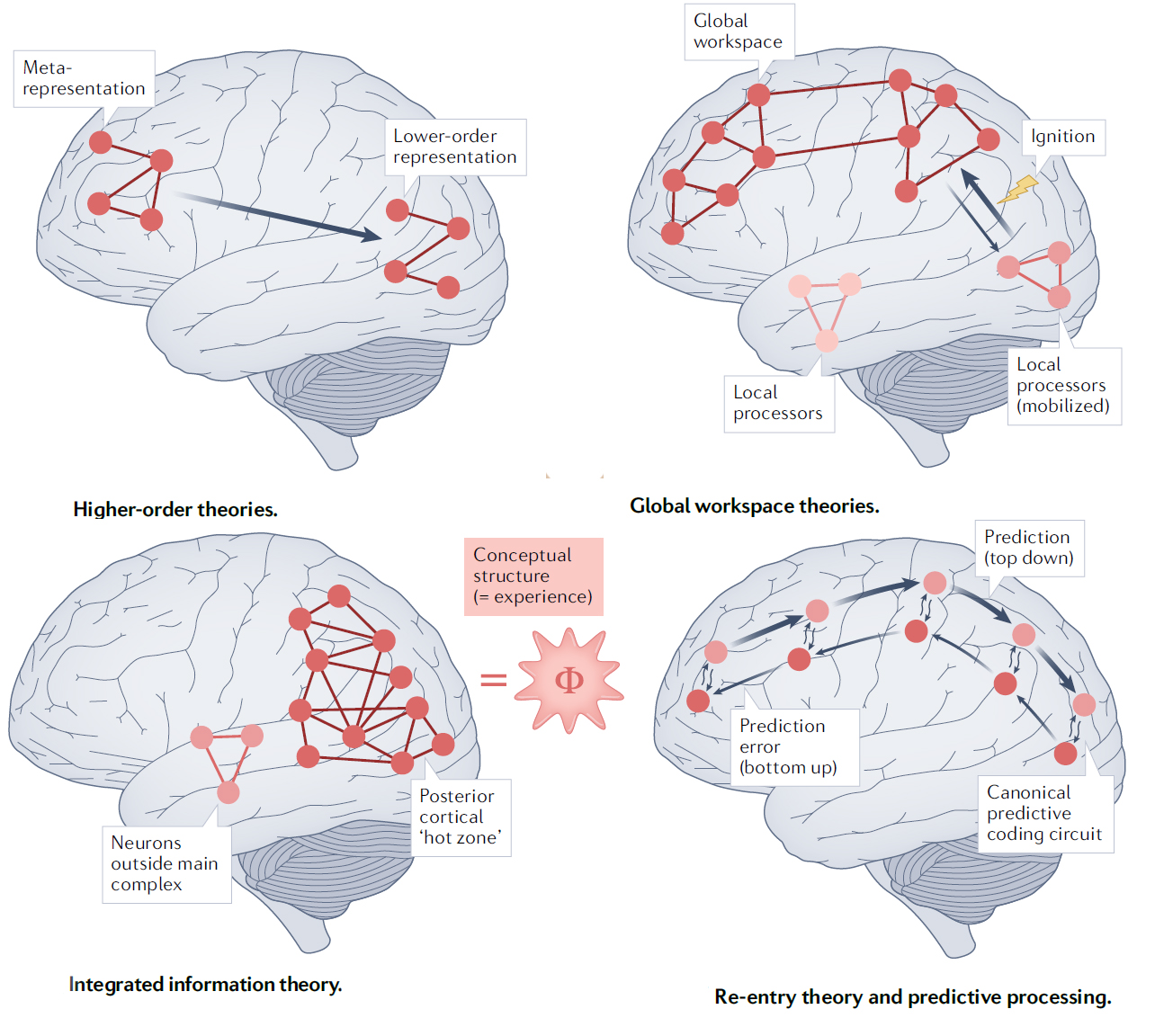 .
.
Today I’d like to tell you about an article that you really shouldn’t miss if you’re interested in the various theories of consciousness in the cognitive sciences: “Theories of consciousness”, by Anil K. Seth and Tim Bayne, published in Nature Reviews Neuroscience in May 2022. (more…)
The Emergence of Consciousness | Comments Closed







